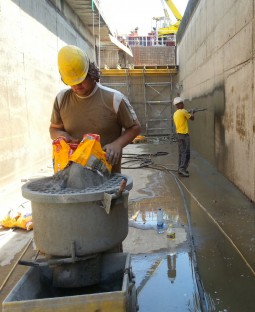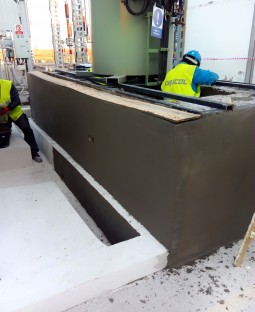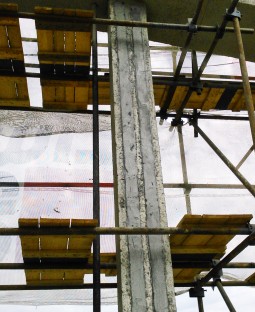Remediate - recover, restore, fix.
Remediation – summary of measures to improve adverse situation (recovery, restoration, fixing, ensuring the stability, reinforcement of buildings).
There are many factors influencing the lifetime of buildings and structures, and the most important of them are the rate and frequency of their use, the weather influences and the faults caused by the actual implementation. Depending on the mentioned factors and their combination, the first damages may occur in a very short time.
We remove these damages with remediation and reprofilation works that mainly consist of protection of exposed reinforcements, restoration of hydroinsulation properties, restoration of degraded and incohesive parts, reinforcement of structures, restoration of mechanical and physical properties, treatment of surface against external influences.
Remediations
Remediations - the title implies that it is a repair of concrete structures damaged due to mechanical or chemical influences. Of course the weather influences the damage, too. They are mainly structures that, due to their importance, are impossible to demolish and replace, like tanks WWTPs (waste water treatment plant), bridges, silos, buildings, waterworks, retention tanks, pumping stations, ...
We meet with the remediation of masonry most often in connection with old, historic buildings (churches, buildings in city centres), where the walls are from a mixture of bricks, aggregate and other building compounds.
Fault manifestation: masonry damping, shedding of plaster, masonry degradation – decay.
Today we can observe two main cases when weakening of bearing structures occurs and their reinforcement has to be executed. The first case is the repair of structures, or if these structures are overloaded due to expansion of capacities and load cycles. The second case is if the building is undersized (often because the investor wants to save) and consequently it is needed to strengthen the whole structure.
Mobile dilatations – due to load and overloading of static load capacity respectively overload in terms of cycles, damages occur (shearing, breakin off, leaking, banging ...). Mobile dilatations are, from the viewpoint of their use: aluminium dilatations, steel dilatations, stainless steel dilatations, composite dilatations (may or may not be hydroinsulating) from the viewpoint of their use.
The main goal at the sealing and sealing of work gaps is to prevent entrance of water and its contaminants into the structure. For this reason, there are several load options and it is not possible to use the same solution for each option. It is mainly pressured sealing and non-pressure sealing of gaps. The main goal is to overcome the movement in the structure and prevent penetration of liquids into reinforced concrete and steel structures.




